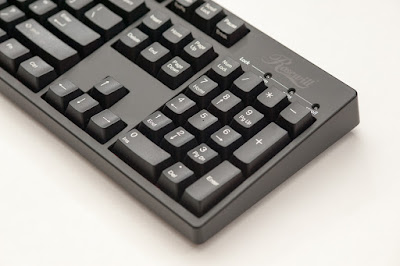To be honest, Topre is an interesting beast to
evaluate. Just like Cherry MX, there’s a
few varieties to keep things interesting.
They are all based in the same technology, but Topre uses various
arrangements of key weights and key cap feels to create various classes of
products. I easily adapted to some and
had hard times with others as chronicled in the blog. However, at this point, I think I have seen
enough to offer an opinion.
There is no doubt about it.
This is the smoothest switch technology I have experienced thus
far. There’s almost no tactile sensation
when the switch is activated. The switch
is not linear either, but has smooth slightly wavy force-distance curve, but
almost flat resistance unlike say a Cherry MX Red, which is just a spring
system. So, if one like the more gentle
approach to life and typing, this is good type to use.
Topre feels like it’s the fastest off the block, sometimes I
think it’s trying to read my mind and sometimes succeed and sometimes fail spectacularly. When that happens, much annoyance. So, to me, this switch is very
polarizing. On one hand, I really
appreciate its Zen like design philosophy, but on the other, I just don’t like
some of its virtues. Matias is its
opposite; it’s complex, bumpy, whimsical and almost too eager to please. So, I would say instead of the focusing only
on the switch, I would take a look at the complete package as I advocated before. I enjoy using some Topre keyboards while another
Topre arrangement makes me rather angry.
I didn’t think I would ever get angry at computer peripherals, but it
managed to do so. So, I have high
praises for the uniform weighted keyboards and will avoid the ergonomic
weighted one like a plague. Again, this
is highly personal and one must experience a Topre keyboard one way or
another. No matter how ever one feels
after testing or trying one, it enriches the whole typing experience.





































